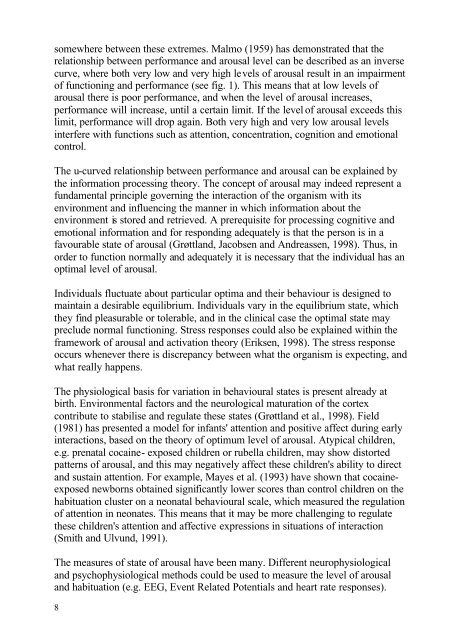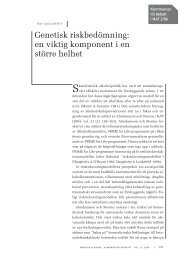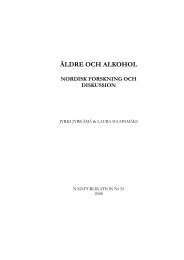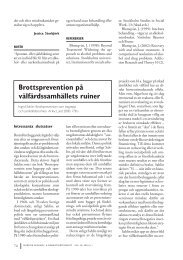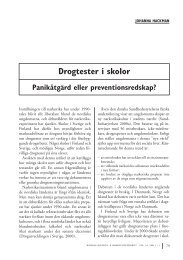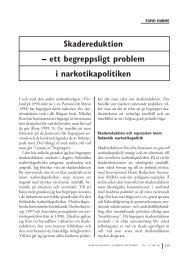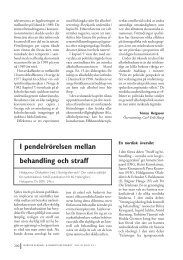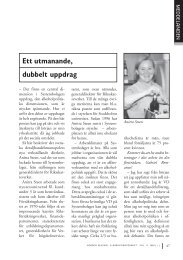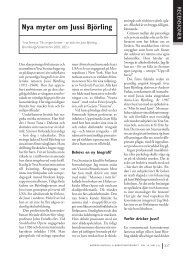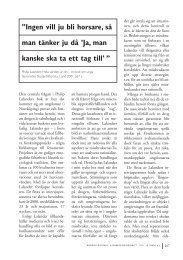CONGENITAL RUBELLA SYNDROME
CONGENITAL RUBELLA SYNDROME
CONGENITAL RUBELLA SYNDROME
You also want an ePaper? Increase the reach of your titles
YUMPU automatically turns print PDFs into web optimized ePapers that Google loves.
somewhere between these extremes. Malmo (1959) has demonstrated that the<br />
relationship between performance and arousal level can be described as an inverse<br />
curve, where both very low and very high levels of arousal result in an impairment<br />
of functioning and performance (see fig. 1). This means that at low levels of<br />
arousal there is poor performance, and when the level of arousal increases,<br />
performance will increase, until a certain limit. If the level of arousal exceeds this<br />
limit, performance will drop again. Both very high and very low arousal levels<br />
interfere with functions such as attention, concentration, cognition and emotional<br />
control.<br />
The u-curved relationship between performance and arousal can be explained by<br />
the information processing theory. The concept of arousal may indeed represent a<br />
fundamental principle governing the interaction of the organism with its<br />
environment and influencing the manner in which information about the<br />
environment is stored and retrieved. A prerequisite for processing cognitive and<br />
emotional information and for responding adequately is that the person is in a<br />
favourable state of arousal (Grøttland, Jacobsen and Andreassen, 1998). Thus, in<br />
order to function normally and adequately it is necessary that the individual has an<br />
optimal level of arousal.<br />
Individuals fluctuate about particular optima and their behaviour is designed to<br />
maintain a desirable equilibrium. Individuals vary in the equilibrium state, which<br />
they find pleasurable or tolerable, and in the clinical case the optimal state may<br />
preclude normal functioning. Stress responses could also be explained within the<br />
framework of arousal and activation theory (Eriksen, 1998). The stress response<br />
occurs whenever there is discrepancy between what the organism is expecting, and<br />
what really happens.<br />
The physiological basis for variation in behavioural states is present already at<br />
birth. Environmental factors and the neurological maturation of the cortex<br />
contribute to stabilise and regulate these states (Grøttland et al., 1998). Field<br />
(1981) has presented a model for infants' attention and positive affect during early<br />
interactions, based on the theory of optimum level of arousal. Atypical children,<br />
e.g. prenatal cocaine- exposed children or rubella children, may show distorted<br />
patterns of arousal, and this may negatively affect these children's ability to direct<br />
and sustain attention. For example, Mayes et al. (1993) have shown that cocaineexposed<br />
newborns obtained significantly lower scores than control children on the<br />
habituation cluster on a neonatal behavioural scale, which measured the regulation<br />
of attention in neonates. This means that it may be more challenging to regulate<br />
these children's attention and affective expressions in situations of interaction<br />
(Smith and Ulvund, 1991).<br />
The measures of state of arousal have been many. Different neurophysiological<br />
and psychophysiological methods could be used to measure the level of arousal<br />
and habituation (e.g. EEG, Event Related Potentials and heart rate responses).<br />
8


